
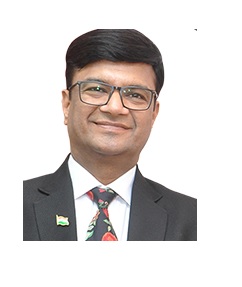
The pharma industry seeks a roadmap that acknowledges pivotal role of budget in healthcare from upcoming interim budget. They also expect a push towards sustainable growth and innovation. A significant boost in healthcare spending tops our list of priorities. Increased allocations are crucial not only to strengthen our healthcare infrastructure but also to ensure quality healthcare services reach every corner of our diverse nation. Simplifying international market access will empower pharmaceutical companies to play a more substantial role globally, thereby contributing significantly to the nation’s economic growth. The industry looks forward to initiatives that streamline and speed-up export processes. We commend the government’s initiatives, including the launch of a new policy on R&D and innovation It is a significant step toward boosting R&D in the pharma and medtech sector. Allocating increased funds and incentives to encourage research and innovation through centers of excellence will further catalyse advancements in pharmaceuticals.

We hope the upcoming Interim Budget 2024 to include increased funding for healthcare and regulatory reforms to make healthcare more accessible in the country. In addition to address India’s current healthcare requirements, the budget needs to have streamlined regulations and it should also have measures to promote domestic manufacturing. Research and Development in Pharma segment should also be promoted with ample budgetary allocations.
———————————————————————————————————

The upcoming interim budget 2024 should outline conducive policies that facilitate ease of doing business for the pharma companies simultaneously with its focus towards establishing Centres of Excellence to promote research in the pharma sector. The budget should also provide fiscal incentives and bring tax reforms to boost investment and collaborations in the sectors.
————————————————————————————————————————————–
Ankit Shah, Group CFO, Omni Hospitals
Anticipating the Finance Budget 2024, OMNI Hospitals emphasises key areas for consideration. According to the recent amendment in the Finance Act 2023, the insertion of clause (h) in Section 43B of the Income Tax Act raises concerns for the healthcare sector. Effective from Assessment Year 2024-25, any payment delay to micro or small enterprises under the MSMED Act may pose cash flow challenges for hospitals. We expect an exemption for hospitals engaged in the credit business and those registered under MSME. Additionally, we hope the Budget classifies healthcare projects as ‘Infrastructure’ to enable access to long-term funds at a lower cost. Inclusion in priority sector lending (PSL) classification would further support the growth of the healthcare sector.
Tax relief is crucial for strengthening healthcare infrastructure. Consideration for tax incentives, including a tax holiday for both existing and new healthcare projects, can significantly contribute to this objective. Rationalising the GST law for healthcare is imperative. Standardizing GST at 5 per cent or a lower rate on all services would simplify input tax credit claims and streamline the cost of providing healthcare services. Lastly, addressing concerns related to insurance claim settlements is vital. Introducing provisions similar to Section 43B (h) for MSMEs, including penalties for undue settlements by insurance companies and establishing an Ombudsman under IRDA, would safeguard the interests of healthcare service providers.

The Union Budget 2024-25 should lend a singular focus on fortifying the foundations of primary care in the country and addressing the infrastructural shortcomings in the sector. Allocating resources to strengthen grassroots healthcare would ensure that high-quality services reach communities, fostering health and wellness. Innovative partnerships should bridge the urban-rural gaps, extending advanced medical facilities to remote areas. Affordability and universal healthcare access must take centre stage. A commitment to universal health coverage, with increased funding for initiatives like Ayushman Bharat and robust health insurance mechanisms, would ensure a healthcare system where financial constraints do not keep anyone out of this virtuous net.
The budget should give a boost to the use of technology and innovation in the healthcare sector. Digital health solutions, AI-based diagnostics, and data-driven decision-making can enhance efficiencies and equitable care delivery, creating an accessible and innovative healthcare landscape. Investments should extend beyond physical infrastructure to human resources and public health. Skilling and attracting medical professionals, coupled with fortifying the public health system, should aim at preventing outbreaks of diseases and emphasizing preventative care.
Specific attention to neglected areas like mental health is crucial. Resources should be allocated for awareness, outreach, and accessible treatment, particularly in rural regions. Given fiscal constraints, a prudent approach is vital. The budget should balance bold interventions with fiscal responsibility, and utilise targeted strategies, private partnerships, and existing resources for an impactful and financially sustainable outcome.
————————————————————————————————————————-

The Indian pharmaceutical industry aspires to reach the milestones of $130 billion by 2030 and $450 billion by 2047 as part of the India@100 vision. Innovation, affordable access to healthcare, upgradation of infrastructure remain the key priorities for the industry to achieve the aspirations.
The above priorities require robust support for the pharmaceutical and medical devices sector from the Government in the form of incentives, revisiting regulations, and implementing measures to ensure exceptional performance.
In the upcoming interim budget, from a tax perspective, some of the key expectations for the industry have been outlined below:
Income-tax Act:
· R&D incentives: While the research scheme of the Government is a welcome step, the tax breaks and other support mechanisms to stimulate domestic drug development and medical devices and attract foreign investment would further support advanced research.
· Boosting local manufacturing: Extension of sun set date for commencement of new manufacturing facilities to avail reduced corporate tax rate. Also focus on contract research incentives as they can further enable manufacturing in India.
· Promoting ease of doing business by simplifying compliances and providing certainty
A comprehensive approach is crucial for navigating the challenges and seizing the opportunities that lie ahead in achieving the envisioned milestones. These are broad asks to stimulate the industry and hope the budget finds some of them.
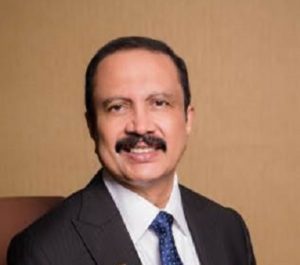
In the last Union Budget, the overall impetus for the healthcare delivery sector was missing. We are hoping that this will get addressed in the upcoming Union Budget with an increase in budget allocation to a minimum 5 per cent of the GDP which is essential to fulfill the need gaps.There is a need to have more hospitals and healthcare facilities in rural and suburban areas to meet the rising demand given that Ayushman Bharat is aiming to make affordable healthcare accessible for 500 million people. Hope the government will put more focus on public-private partnerships (PPP) to address this, and also permit 100 per cent Foreign Direct Investment (FDI) in both Health Insurance and Retail Pharmacy sectors.
There is an urgent need for comprehensive reform of medical education to ensure that the medical professionals of tomorrow are aligned with contemporary healthcare needs. This brings forth the need to develop medical colleges, nursing colleges and paramedical colleges in all the 500 district hospitals in the country. A substantial allocation, including the setting up of Central Medical Research and Innovation Institute in each state would be a good start. Setting up a Central Digital Health and AI University will also help deploy technological innovation in healthcare to address challenges such as accessibility and equity along with healthcare costs. Additionally, there should be a specialized university catering to NRI students intending to return to India for academic pursuits.
We were also hoping for concessions for NRIs residing abroad like reduction on TDS for those who have a source of income in India and are required to pay taxes in the country they reside in. Other considerations include affordable airline fares to SAARC and GCC countries to support the growing trade and business collaborations between the regions, along with the implementation of a health scheme for those returning to India for retirement, among other beneficial measures.

I would expect this budget to recognise the sector’s varied needs and assign sufficient funding to further develop healthcare infrastructure, especially in rural areas. Comprehending the significance of ease of access and quality healthcare for all, I urge the government to assign resources for the formation and maintenance of more healthcare facilities in underserved regions. I would also like to see diverse initiatives being taken up by the government to promote the integration of technology into healthcare delivery and prompt allocations of funds towards telemedicine, health information systems, and digital health solutions that can boost the competence of healthcare services, bridge urban-rural healthcare inequalities, and ensure the availability of medical knowhow to all crooks, turns and bend of the country. I also would like to stress the necessity for policy measures that reassure
public-private partnerships in developing and applying such technological solutions. In the challenge of the COVID-19 pandemic, the healthcare industry has already underlined the significance of readiness for future health crises. Thus, I would expect the overnment to allocate sufficient funds for developing a planned supply of medical essentials, improving research capabilities further in healthcare science, and strengthening the healthcare workforce. I would envisage that this budget not only attends to immediate concerns but also lays the foundation for sustainable growth, innovation and inclusivity.

We have a positive outlook on the forthcoming budget, recognising the essential function of technology towards propelling healthcare in India. We anticipate that the government will demonstrate its commitment to encouraging the adoption of digital health technologies such as remote healthcare and electronic health records, in line with the National Digital Health Mission’s objectives. As India strives to enhance patient care and operational efficiency in the healthcare industry, we believe that it is essential to explore the unrecognized epidemic of sleep health and sleep disorders within the country. Considering the dynamic healthcare landscape, there is potential for medical equipment and home healthcare using telemonitoring to be covered under insurance. We also encourage the inclusion of sleep-related disorders such as Obstructive Sleep Apnea (OSA) to the classification of Noncommunicable illnesses (NCDs). Additionally, there is a need to incorporate sleep testing in the category of diagnostics under National Diagnostics Essential List. This would not only be in keeping with the healthcare industry’s forward-thinking trajectory, but it would also make these essential services increasingly accessible and available for Indians.

A robust healthcare system drives GDP growth in the presence of adequate investments and a conducive environment by not only acting as a productivity and employment generator, but also as a sector that attracts FDI and provides opportunities for innovation and entrepreneurship. A better healthcare ecosystem is essential for achieving India’s vision of being a developed nation and it needs a paradigm shift and exponential change in budgetary outlay. Thus the finance minister should accord priority sector status to healthcare and increase public healthcare spending to 2.5 per cent of GDP in budget 2024.

I would expect that the Budget allocation needs to be at least 3.5 to 4 per cent of the GDP with a committed focus on preventive healthcare architecture which emphasis on creation of healthcare infrastructure in rural and underserved areas to improve healthcare accessibility, availability, and affordability. GST and Custom duty relief for the advance medical technology is a must as this has helped India becoming a key medical value travel destination for more than 130 countries. Incentivise Private sector for more PPP healthcare models which can help Govt reduce chronic disease burden faster by leveraging the sectoral efficient capabilities. Inclusion of newer therapies in Govt/Private Insurance coverage is must to make real benefits of PMJAY to the needy population. Additionally, the continued focus on investment in AI and other healthcare technology like telemedicine through capex needs to be encouraged continuously. It’s also high time that the Govt creates a mechanism like PLI for Private healthcare sector as well.

The launch of National Policy on Research and Development and Innovation in pharma-medtech Sector and Scheme for Promotion of Research and Innovation in Pharma MedTech Sector (PRIP) last year has given a boost to pharma innovation in the country. We hope that the upcoming budget also focuses on research and development in the country. This is a critical need on the background of rising incidence of chronic diseases. Investment in R&D is a long-term investment in the future of healthcare in the country. It will help provide affordable drugs for people who suffer from chronic diseases and require long-term treatment. It would empower India in its journey to becoming a global hub for end-to-end drug discovery.

The Indian healthcare sector has been allocated Rs 89,155 crore for the year 2023-24. India’s healthcare spending is currently at a mere 1.8 per cent of GDP, falling significantly below the global average of 6 per cent. An increase of 20 per cent-30 per cent in the upcoming budget is imperative to cater to the key focus areas for the sector. This increase will facilitate improved healthcare infrastructure, increased R&D capabilities, and enhanced preventive measures. Increased investment in modern tech and digitisation is the need of the hour for the healthcare sector. One important measure that we recommend the government is to introduce a central repository of every citizen’s medical history. Each citizen can be provided with a unique id similar to Aadhar number. This will reduce the burden of maintaining medical files on the individuals. Also, in case of emergencies any hospital or doctor can access their medical history for deciding optimum treatment course.

The consumer health sector in India is expected to experience a significant surge, driven by an increasing awareness and demand for self-care among consumers. This upswing, which has been partly catalyzed by the pandemic, underscores the pivotal role of the National Health Mission (NHM) and underscores the necessity of preventive health care within the country. In light of this, there is an urgent call for the budget to channel more funding towards promoting responsible self-care practices. Additionally, there’s a need to bolster the primary care infrastructure in India. This strategy is key as the country continues to pivot towards a preventive healthcare model. Ensuring that health solutions are both accessible and affordable becomes even more crucial, particularly as Indian consumers become more health-conscious and their priorities evolve. This approach not only aligns with the current health trends but also promotes a sustainable and healthy future for all Indians.

While the government has steadily focussed on setting up new hospitals, and launching medical colleges in various parts of the country, that’s only one part of the solution. It is important that the gap between the large number of patients outside Tier-I, Tier-II, cities and qualified medical professionals based in the major cities is bridged through digital technology. It is also imperative that the existing pool of healthcare professionals in the country is connected, and provided with CME opportunities to remain updated with the latest therapeutic, pharmacological, and technological developments in the medical sector globally. There is a need for the government to allocate budgets for this alongside budgeting for new medical colleges. This can be achieved through the highly impactful public-private partnerships between the Government and leading digital platforms providing CME to healthcare professionals and disseminating authentic healthcare information, offering telemedicine coverage, to patients throughout India. We look forward to the government’s attention on this aspect in the upcoming Union Budget 2024.

The forthcoming Union Budget is an interim budget due to the Lok Sabha elections in 2024.The rates at which profits are presumed to have to have been earned, under presumptive taxation, is another area of discrimination. For businesses, the profit offered is acceptable if it is not less than 8 per cent of the turnover (6 per cent for non-cash turnover) while for doctors, it is acceptable only if it is not less than 50 per cent of the turnover.This presumptive rate for doctors certainly deserves to be lowered. At least a lower rate for their non-cash turnovers would be a fair request of the doctors. We would like the government to come up with measures to make ‘Universal Health Coverage’ its aim in the next five years and the first step would be declaring “Right to health” as a fundamental right in the constitution, which will require major inter- ministry coordination and budgetary allocations as well as a constitutional amendment.

Allocate funds for AI-powered triage and diagnostics in rural primary care centres, enabling timely intervention and specialist consultations, regardless of location. Promote research and development in AI-assisted personalised AYUSH (Ayurveda, Yoga and Naturopathy, Unani, Siddha and Homeopathy) treatments, offering evidence-based options for chronic diseases and reducing dependence on expensive allopathic drugs. Streamline medical recordkeeping and compliance using AI- driven data anonymisation and secure cloud storage, reducing administrative burden and improving patient care. Fund development of AI-powered rapid diagnostic tools for early detection of prevalent diseases like diabetes and cardiovascular conditions, enabling preventative measures and cost savings. Invest in AI training programs for healthcare professionals, empowering them to leverage technology for improved diagnosis, treatment, and research. Increase funding for AI-driven medical research initiatives, focusing on personalised medicine, drug discovery, and pandemic preparedness. Facilitate partnerships with global AI leaders for knowledge and technology transfer, boosting India’s position as a healthcare innovation hub. Develop AI-powered platforms for patient management and medical tourism promotion, attracting international patients and leveraging healthcare as an economic driver. Encourage private sector investment in AI-powered healthcare solutions through tax incentives and collaborative research grants. Establish dedicated funding channels for healthcare AI startups, fostering innovation and accelerating tech adoption across the sector. By prioritising these AI-driven initiatives, the 2024 budget can give real impetus to the continued transformation of India’s healthcare landscape, fostering equitable access, enhancing affordability, and driving innovation for a healthier future.

There’s a vital need to elevate social insurance schemes, advance healthcare reforms, enhance infrastructure, and roll out fast-tracking digital health services across the country. A pivotal step in this direction would be to raise the deduction limit of medical insurance premiums under Section 80D, encouraging more investments in health coverage, especially given the escalating healthcare costs. Additionally, concerted efforts should be made to promote medical insurance, ensuring broader access and coverage for the population. While an increase in budget allocation has been a longstanding demand from the sector, another critical issue lies within the healthcare credit chain related to GST. Simplification of the GST structure concerning medical equipment and drugs by potentially lowering rates and addressing embedded tax issues could mitigate healthcare costs to a far extent. Therefore, introducing a reform agenda within the Finance Bill to revamp the healthcare GST framework is highly advisable. In addition, promoting domestic innovation is crucial. Creating a favourable environment for research and development in pharmaceuticals and medical devices can drive advancements. Engaging more in public-private partnerships can be instrumental in widening access to and enhancing the efficiency of healthcare facilities, thereby bridging existing healthcare disparities. Furthermore, an inevitable aspect of elevating India’s healthcare sector is workforce development. While the cabinet’s approval for the establishment of 157 new nursing colleges in the previous budget is commendable, the reinforcement of health workers’ positions demands sustained governmental attention and support. We must prioritise both comprehensive training and development initiatives for doctors, nurses, and allied health professionals and the active implementation of standardised certification programmes.

The budget for 2024 offers an important opportunity to accelerate the growth of this sector. Schemes such as PRIP (Promotion of Research and Innovation in Pharma MedTech Sector) and MedTech Mitra have been implemented to support the industry. The government has a chance to provide more support to the MedTech sector in the upcoming budget. This could be achieved by reducing import duties and lowering GST on locally procured raw materials. The focus should be on critical medical devices such as stents, heart valves,
knee, and hip implants.

Healthcare sector is to be perceived as an ecosystem. While delivery of care is at the core, it is closely intertwined with other facets like nutrition, sanitation, safe drinking water, reduction in
pollution, primary education, etc to name a few. The Government has been viewing it from that perspective, especially with wellness and prevention of disease as the focus. Therefore, the expectation from the Budget is for continuity of that framework and adequate focus as well as funding support for all components of the ecosystem to ensure that we progress on the goals of prevention and wellness.

Patient education is often overlooked but plays a crucial role in ensuring accurate information dissemination, particularly in today’s era dominated by the Internet and social media. The prevalence of misinformation circulating online poses a significant challenge, leading to confusion for both patients and caregivers. There is an urgent need to prioritise patient education and awareness, facilitated by the development and implementation of tools and resources that enable seamless and precise communication between healthcare providers and patients during consultations. Recognising the seriousness of this issue, we express our hope that the finance minister pays special attention to this critical aspect in budget considerations.

As an industry, we seek 3 per cent of GDP allocation towards uplifting the medical and healthcare ecosystem, especially in the rural counterparts. Secondly, we expect the Finance Ministry to consider a cut on custom duties on imported medical devices to 2.5 per cent, to enable the hospitals and other healthcare institutions to derive the benefits of input tax credit on the imports. This will further drive a wave of motivation for healthcare ecosystem not just of Gujarat, but overall country to upgrade to technology-led hospitals. This in turn, will further strengthen the position of India as a healthcare destination across the world.

We anticipate a visionary budget that recognizes the indispensable role of diagnostics in the healthcare ecosystem. Our expectation is for policymakers to prioritise strategic investments, fostering innovation, accessibility, and the highest standards of diagnostic services. Our anticipation extends to a budget that not only addresses immediate needs but also lays the foundation for a robust and resilient healthcare system. Investments in cutting-edge technologies, research, and training will not only elevate diagnostic capabilities but also contribute to the overall efficiency and effectiveness of healthcare delivery. Accessibility to quality diagnostic services is paramount, and we look forward to a budget that facilitates this accessibility across all sections of society. Whether in urban centers or remote areas, every individual should have access to accurate and timely diagnostics, promoting early intervention and improved health outcomes.

We understand the pivotal role that Sports Medicine plays in fostering a thriving and resilient community. Investing in Sports Medicine within the upcoming financial budget 2024 is an investment in the well-being of our athletes and the overall health of our society. In the pursuit of a healthier nation, we urge our government to prioritise Sports Medicine in the 2024 budget. This commitment will not only enhance the performance of our athletes but will also have a ripple effect, positively influencing the health and vitality of our entire community. We also advocate for a future where sports and wellness intersect, creating a stronger and more vibrant society for generations to come.

We advocate for increased resources and investments to enhance mental health infrastructure, focusing on specialized care centers, advancing research in severe mental health conditions, and implementing policies that ensure access to long-term, quality treatment. To address the growing mental health challenges, allocating a budget for the training of mental health professionals, including counselors, nurses, and lab technicians, is essential. It’s crucial to treat serious mental health with the same urgency as physical health, understanding its integral role in our nation’s overall well-being. We look forward to the government’s sustained commitment to transforming mental health care, fostering inclusivity, accessibility, and support for those grappling with serious mental health challenges.

This is India’s second post-pandemic budget, and unfortunately, last year’s budget for the healthcare sector was lacking. This year, it is imperative to focus on bettering India’s health infrastructure like more hospitals with an increased number of medical professionals for our growing population. Only a few years ago, it was shrugged off as being too complicated and inefficient, but with how rapidly we have evolved, we can now use a higher budget in healthcare to further improve the quality and accessibility of medical practice in India. We need more robust policies for the elderly, especially those who are living alone.
Dr Narendra Vankar, Founder and CEO, Quantum CorpHealth

Expanding medical college seats is a good start, but we need to accelerate this pace significantly. There is a huge shortage of the required number of doctors, nurses, and technicians, in primary Health Care Centres. We expect the upcoming budget to prioritise addressing this critical shortage, with a strong focus on increasing doctors, nurses, paramedics, and technicians and on providing basic diagnostic equipment at the primary health care Centers.
—————————————————————————————————————————————

As we approach the unveiling of the new budget, our aspirations for the healthcare sector are anchored in comprehensive, inclusive growth. The budget should prioritise expanding healthcare infrastructure, especially in Tier II cities and rural areas, which have long faced disparities in access to quality care. Collaborative initiatives involving both public and private sectors could play a transformative role in closing these gaps. Emphasising preventive healthcare is equally important, and we hope to see policies that make health insurance more affordable and widespread. This, combined with national campaigns promoting healthy lifestyles, could dramatically improve the overall well-being of our population. Another critical area is the allocation of funds for medical research and development, with a special focus on integrating AI and other technological innovations in healthcare. Such advancements could place India at the forefront of medical innovation. A budget that strategically addresses these aspects will not only enhance the quality of healthcare but also contribute to the creation of a healthier, more productive society, ultimately fuelling sustainable economic growth.

We approach the 2024 budget with cautious optimism. We expect the government to prioritize policies that unlock the immense potential of the nutraceutical, Health & Wellness and Ayush Industry. Investments in R&D infrastructure, skill development, and ease of doing business can propel India to become a global leader in this sector. We urge the government to consider tax uniformity in the Healthcare sector, and special consideration for research and innovation, streamlined regulatory pathways, and robust export incentives to empower Indian nutraceutical companies to compete on the world stage.

Indian government needs to implement focused strategies. These include creating innovation zones offering incentives and infrastructural support, encouraging public-private partnerships to combine expertise and resources, and boosting funding for advanced drug research and development. Streamlining regulatory pathways to expedite approvals for novel treatments and investing in educational initiatives to develop a workforce adept in pharmaceutical innovation are also key. These initiatives are expected to usher in a new age of Indian pharmaceutical leadership, characterized by groundbreaking R&D. With the manufacturing sector projected to add 800-900 billion to the GDP in the next four to five years, India is on the brink of revolutionizing manufacturing, integrating sustainability with cutting-edge science and technology. With the right policies and initiatives, India can transform these potentials into reality, securing its position as a global hub for sustainable manufacturing.

I see the upcoming budget as a pivotal opportunity for the government to strengthen the healthcare sector, especially in light of recent challenges. We expect a strategic emphasis on improving healthcare infrastructure, allocating resources for advanced medical technologies, and promoting research and development. The government’s assistance, such as offering tax incentives for healthcare investments, implementing streamlined policies to boost public-private partnerships, and increasing budgetary allocations for medical education and training, would significantly enhance the overall healthcare environment. Furthermore, giving priority to health insurance reforms and providing incentives for preventive healthcare measures could lead to a healthier population and alleviate the strain on the healthcare system. In these unprecedented times, a collaborative effort between the government and private healthcare entities is imperative. We hope that the budget reflects a forward-thinking approach, aligns with industry expectations, and ultimately establishes a resilient healthcare framework for the nation.
———————–
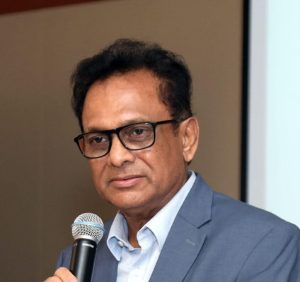
The budget plan for 2023-24, a significant amount of Rs 89,565 crores was allocated to the health sector. The National Health Mission (NHM) stands out as a crucial initiative within this budget, aiming to tackle both communicable and non-communicable diseases, thereby influencing health delivery substantially. An admirable allocation of Rs 35,947 crores has been directed towards NHM, encompassing comprehensive programmes for both rural and urban health.
Under the NHM framework, specific funds have been designated for the National Disease Control Programme, focusing on tuberculosis and vector-borne diseases. Notably, the National Centre for Vector Borne Diseases Control (NCVBDC) primarily addresses six vector-borne diseases, including malaria, Filaria, Kala-azar, Japanese Encephalitis, dengue, and chikungunya. Other diseases like Zika, West Nile Virus, Scrub Typhus, Kyasanur Forest Disease, and Crimean-Congo Haemorrhagic fever also fall under the purview of NCVBDC. According to available resources, the annual budget of NCVBDC is estimated to be around Rs 1400 to Rs 1500 crores, with a dedicated budget of 1500 crores. NHM provides additional supportive funding of about 8 to 10 per cent, resulting in a total budget ranging from Rs 4200 to Rs 4500 crores. Despite the significance of addressing vector-borne diseases, this sector only constitutes 10 per cent of the NHM budget, amounting to Rs 4000 crores.
This amount is considered insufficient, particularly when three diseases—malaria, filaria, and Kala-azar—are targeted for elimination by 2030. Noteworthy progress has been made in reducing malaria cases since 2015, with around 90 per cent of cases concentrated in 8 tribal states across 27 districts. Programs like the camp-based DASTAK initiative launched in Uttar Pradesh for effective Japanese Encephalitis control should be included with adequate funding. Lymphatic Filariasis elimination is present in 272 endemic districts, warranting special funding for home-based morbidity case management. Additionally, special financial assistance is needed for patients with Lymphedema requiring integrative medicine. Currently, less than 1000 cases of Kala-azar are reported, and strict monitoring is essential to achieve the goal of eliminating mosquito-borne diseases. Ultimately, ‘Log Bhagidar’ remains the central focus for effective management of vector-borne diseases.

The upcoming budget 2024, offers a crucial opportunity to take forwards the aspirations of the Hon’ble Prine Minister who coined the MedTech sector as a “sunshine” sector. There has been great focus on encouraging investments and promoting schemes like PRIP (Promotion of Research and Innovation in Pharma MedTech Sector) and MedTech Mitra by Department of Pharmaceuticals and ICMR-DBT
As we head to National Elections, the Union Budget 2024-25 needs to address long-term infrastructure financing and fiscal reforms in the health insurance sector since Ayushman Bharat is expected to expand from the Rs 5 lakhs coverage to Rs 10 lakhs, hence India needs a health insurance model that prioritises preventive healthcare over procedures under PMJAY.
Further, the Budget 2024-25 needs support the medtech sector by reducing import duties and lowering GST on locally procured raw materials, particularly for critical medical devices such as Implants like stents, heart valves, occluders etc. There needs to be a budgeting where common people can aspire to get critical healthcare treatments like TAVI under the national and state schemes and encourage private health insurance companies to embrace the same so that healthcare access for economically weaker sections can be made pocket friendly. This will this will clearly be seen as a win-win to achieve the goal of ‘affordability, availability and accessibility’.
Again, the Union Budget should focus on further boosting research and development infrastructure and tax rationalisation, gearing up for an aspirational $50 billion medtech economy. The heavy import duties on medical equipment affect operational costs. The medtech industry would be expecting a reduction of import duties, creating a win-win situation for both manufacturers and large hospitals, ultimately benefiting the patients.
Lastly, timely payments and transparent pricing are essential to provide quality care. We look forward to clear guidelines from the government, addressing outstanding dues and revising rates under government schemes to ensure the viability of healthcare which will help corporates to enhance their innovation budgets and improve quality outcomes.
Therefore, the Industry expectation from the Budget is for continuity of that framework and adequate focus as well as funding support for all components of the ecosystem to ensure that we progress on the goals of prevention and wellness.
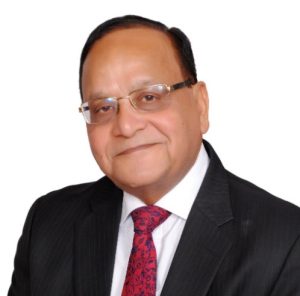
India has played a pivotal role in shaping global health outcomes by providing affordable quality-assured medicines. Today, the Indian pharmaceutical industry is at the cusp of change. The Indian pharma sector aims to achieve $120–130 by 2030 and $400-450 by 2047. To achieve this vision, the Union Budget 2024-25 should accelerate the pace of innovation and R&D. The announcement of the Promotion of Research & Innovation Program (PRIP) Scheme in 2023 was a positive step to spur innovation. Given the high risk, long gestation period and low success rate in research, there is a need for continuous investments. Therefore, the budget 2024-25 should outline conducive policies that provide benefits in terms of both direct and indirect taxes and also facilitate ease of doing business for the pharmacos.
The year 2024 is likely to witness the initial results of the various initiatives to augment India as a reliable supplier of medicines. Policy stability and continuity will be fundamental to propel the sector’s growth. India is poised to move to “Discover and Make in India” from “Make in India”, making India the custodian of healthcare of the world.

Amid the fast-changing healthcare landscape and with COVID-19 once again in the spotlight, the upcoming Union Budget for 2024-2025 holds significant importance in strengthening India’s healthcare ecosystem. The forthcoming budget should serve as a driving force, channelling investments towards critical areas such as innovation, research and development, technology, upgrading healthcare infrastructure, and bolstering patient safety measures. Given the escalating burden of Non-Communicable Diseases (NCDs), we emphasize the necessity for regular and inclusive screening and diagnostics programmes along with more skilling courses for health professionals to attract as well as upskill talent in the diagnostic space. Additionally, we strongly advocate for the government’s consideration to implement a 0% GST on diagnostic services and facilitate refunds for GST paid on inputs. Recognizing that 60% of India’s diagnostics are reliant on imports, it becomes paramount for the government to rationalize import tariffs on healthcare products. Low-cost financing schemes can enable private players to upgrade and add diagnostic infrastructure in tier II and III geographies. These initiatives will not only enhance accessibility and affordability but also lay the groundwork for a robust healthcare ecosystem that can effectively combat present and future healthcare challenges.

As India navigates the critical path of healthcare reform, NATHEALTH has presented a comprehensive set of budget recommendations to the government, targeting transformative changes. Our proposals emphasize the need to bridge regional healthcare disparities through inclusive and innovative strategies. We are advocating for an increase in healthcare spending to 2.5 per cent of GDP and the rationalisation of the GST framework. Additionally, we aim to enhance the medical value travel segment by addressing the MAT credit issue and strengthening the healthcare value chain, which is essential for driving economic growth and creating new job opportunities. A key focus should be on building local capabilities to deliver healthcare services even in the most remote regions, alongside the localization of the healthcare value chain. Equally important is the capacity building and training of healthcare professionals, which is crucial to cater to our nation’s increasing healthcare needs. These measures are fundamental to developing a resilient and efficient healthcare system in India.

Over the past few years, Government-run schemes, both at the Central and State levels, have gained popularity, such as Ayushman Bharat Yojana or in Maharashtra, the Mahatma Jyotiba Phule Jan Arogya Yojana. However, the packages offered for healthcare services under the schemes are quite meagre and insufficient to sustain and enhance quality healthcare initiatives. We request the Government to increase the cost limit of the package so that expected quality of healthcare can be provided to the patients. Hospitals should receive some input credit benefits to alleviate the impact of GST. Strengthening the healthcare value chain is crucial, particularly in rural areas where a significant portion is still deprived of quality healthcare. To achieve this, an increase in healthcare spending is essential. The current budget allocation stands at a meagre 1.6 to 1.8 per cent. It is suggested that we raise it to 2.5 or 3 per cent of the present budget to make a meaningful impact. Medical value tourism is gaining traction, and India has the potential to be a major player in this sector. Government support will enhance this aspect of healthcare, bringing in foreign revenue while also improving the scenario for Indian doctors and hospitals.

OPPI believes that the concessional tax rates under Section 115BAB of Income Tax Act, 1961 should be extended to companies solely engaged in R&D of pharma as well, beyond those related to manufactured articles. We also hope for the elimination of import duties on life-saving drugs, recognizing that individuals should not bear substantial taxes during health crises. Simultaneously, we call for increased incentives for innovation and to attract foreign investment in advanced research. Emphasizing the importance of Intellectual Property (IP) protection, we recognize that India’s evolution beyond a volume supplier depends on prioritizing groundbreaking innovations. The implementation of these measures would not only strengthen the pharmaceutical and biotech sector but also enhance India’s global standing in innovation and healthcare.

While ABDM lays a robust foundation, there is a pressing need for the government to incentivise healthcare providers and health-tech companies, to actively engage in delivering the healthcare digitalisation roadmap and building a unified healthcare system. The government should actively explore the opportunity of engaging healthcare start-ups, to build a partnership between National Health Authority and healthcare providers, in implementation of clinical ecosystems such as electronic medical records(EMR). This will help in building a digital, patient longitudinal history, which through the NHA ecosystem can deliver the unified healthcare system for patients. The deployment of EMRs will help in standardisation of healthcare delivery, offer better insights into clinical data analytics, which can help healthcare providers to manage the complete patient care continuum and deliver better care outcomes. We hope the Union Budget 2024, will lay emphasis in building an implementation roadmap for healthcare digitalisation, which incentivises the healthcare sector to achieve Prime Minister Narendra Modi’s vision for Amrit Kaal 2047 and delivering quality healthcare for all.

In the upcoming 2024 budget, the government could consider enhancing the budget for the healthcare industry. The increased budget allocations can improve accessibility and affordability to people not just in Tier I cities, but also in Tier II and Tier III cities. Simplifying and making fairer taxes, specifically reforming GST, can contribute to this goal. The government could also consider a framework to focus on healthcare insurance, medical supplies and equipment, telemedicine, and medical tourism sectors of the healthcare industry. The government must prioritise enhancing infrastructure, especially in non-metro areas, ensuring that individuals can readily access healthcare when required. This initiative will not only benefit local communities but also contribute to the overall improvement of healthcare services on a global scale.
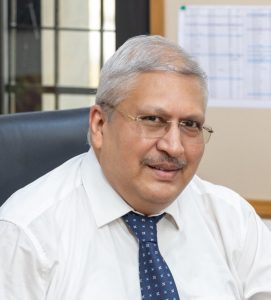
As we approach Union Budget 2024, it is a critical juncture to address challenges in healthcare, specifically focusing on improving infrastructure and making healthcare more accessible. A prudent step would be to trim the capex by streamlining the GST component in both construction and the procurement of medical technologies, thereby easing the financial burden. Additionally, considering the limited input credit avenues for hospitals, a similar GST rationalisation for pharmaceuticals and consumables could contribute to cost reduction for both the industry and patients. The government should consider giving a ten-year tax relief for NABH-accredited hospitals in smaller towns. Currently under section 80IB, operating and maintenance of hospitals with 100 beds or more, are given 100% deduction from tax on profits for initial five years. This should be increased to 8-10 years. Facilitating a separate SPV, also known as a special-purpose vehicle, should be created to formulate PPP on a win-win basis to attract the private sector. The government should bring inclusion in schemes like Ayushman Bharat. Besides, co-payment strategies could be used as a tool to further motivate the middle class to get adequately insured. Incentives of electricity tariff subsidy should be given to hospitals in order to encourage them to move towards energy efficiency and secure green building certification. The overall allocation to healthcare outlay should be increased to 2.5 per cent as was assured in the past. The current spend of 1.8 per cent is insufficient to meet the healthcare requirements of the nation.

We expect the government to continue with its focus to develop infrastructure facilities in the form of medical device parks so that the medical device industry becomes self-reliant. Localisation of the supply chain of medical device and kit manufacturing will ensure better healthcare outcomes for the country in terms of availability and affordability. The budget needs to propose allocation of resources to expand digital infrastructure and build R&D facilities to ensure superior healthcare delivery and interventions.

In the last few years, the Government of India has taken significant steps to revamp the healthcare infrastructure, placing a strong emphasis on digital health records under the Ayushman Bharat Digital Health Mission. We anticipate government’s continued commitment towards the initiative and look forward to a heightened focus on the robust implementation of this scheme in the upcoming fiscal year, fostering transparency in the healthcare ecosystem and accelerating advancements in treatment outcomes. We also expect a forward-looking approach from the government, emphasizing on allocating funds to enhance technology-powered innovative healthcare models tailored for India’s diverse population.

The Indian healthcare system, one of the largest in the world, is likely to grow to $50 billion by 2033, with contributions from both public and private sectors. The government expenditure for health has been a steady increase from 1.4 per cent of GDP in FY19 to 2.1 per cent of GDP in FY23. However, in view of the healthcare needs from within and outside of India, there is an urgent need to infuse more investments to upgrade the life sciences infrastructure. Doing so is important to aid the R&D capability of pharma majors as well as Indian startups in the life sciences research, which will further boost India’s rise as an innovation hub and help go beyond the ‘pharmacy of the world’ tag. We have witnessed encouraging steps of 35 per cent on-year increase in budgetary support to capital expenditure in the budget of 2022. Continuing a similarly robust budgetary allocation for healthcare infrastructure will not only improve the state of life sciences R&D in India but will also augur well for the country’s capability to offer quality but cost-effective medical services.
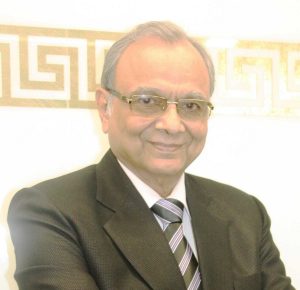
With nearly two-thirds of India’s population residing in rural areas, access to medical services remains a critical challenge. This coupled with the fact that per capital income of an urban person is nearly double to that of his rural counterpart, it simply highlights the fact the if we have to improve our country’s standing on medical services, the focus should be the rural areas where lot needs to be done. The stark disparity in doctor-to-population ratios between rural and urban areas leaves the rural population significantly disadvantaged in healthcare access. Unfortunately because of this, the rural population fails to get the medical facilities greatly as compared to the urban. This we are talking about the basic medical health (largely catered by General Practitioners or MBBS doctors). However, specialists like heart surgeons and neurosurgeons are virtually absent in most rural areas, severely limiting access to advanced medical care. In the upcoming Budget, we urge the Government to prioritise rural healthcare in its budgetary allocations, investing both directly in infrastructure and medical personnel; and through targeted incentives to attract doctors and hospitals to underserved areas.

With the country focusing on research and development and Healthcare with much more tenacity than earlier, expectations towards similar allocation of budget towards these areas is expected for FY24-25. Additionally, continued encouragement of Foreign Direct Investment in the healthcare sector could be sustained in the months and years to come.
With the Indian Pharmaceutical sector trying to reach the $130 billion target by 2030, there is a renewed spirit of research in the areas of cell and gene therapy, biologics and biosimilars apart from the already strong generic and vaccine manufacturing sectors of the country. Collectively, the industry is looking forward to the financial budget of 2024-2025 with renewed anticipation specifically about R&D and Healthcare focus.
In the upcoming budget, the focus can be inclined towards the establishment of Centres of Excellence, with a focus on encouraging research and innovation in the pharmaceutical sector. The budget can also focus on technological advancements such as Gen AI, where the government can boost investments in AI, identify new research areas for the pharma sectors and additionally promote academia-industry collaboration. The budget can also focus on implementing centralised data repositories for the country such as Electronic Health Records (EHR) and a centralised medical record database, to maintain transparency and discrepancies.

The upcoming Union Budget 2024-2025 will determine how well India progresses with regard to achieving its stated objectives of becoming the ‘Pharmacy to the World’ and embracing ‘OneHealth’ principles. The government must continue incentivising R&D and manufacturing to boost growth and innovation in the industry, something which was particularly evident in the Promotion of Research and Innovation in Pharma Med-Tech Sector (PRIP) scheme from the previous budget. The second component of the PRIP scheme, with an allocation of Rs 4,250 crore, focussed on research in the pharmaceutical sector, especially in six priority areas including antimicrobial resistance (AMR). A continued emphasis on prioritising antibiotic research is crucial to help address the growing challenge of AMR. We suggest exploring innovative economic models to incentivize antibiotic research, recognizing the unique challenges associated with it. Market entry rewards and delinked subscription models could be considered to encourage pharmaceutical companies to invest in the development of new antibiotics. This strategic approach aligns with the goal of fortifying India’s position as a global pharma leader and addressing pressing healthcare challenges, including AMR. The continuation of the Research-Linked Incentive scheme and tax exemptions for materials procured for R&D purposes is crucial for creating a conducive ecosystem that enables R&D-driven pharma companies in India to compete globally. Finally, the government must prioritise funds for digital integration in pharma supply chain, ensuring better access and uninterrupted deliveries in real time, since this is crucial for healthcare transformation.

The vibrant healthcare sector, exemplified by numerous significant deals sealed during the fiscal year 2023-2024, reflects robust growth and success. Substantial investments in healthcare underscore the government’s unwavering commitment to strengthening the sector, ensuring the well-being of the population. In addition to healthcare, government investments in infrastructure and the manufacturing sector have played pivotal roles in propelling India’s economic surge. This comprehensive growth has synergised with the healthcare industry, establishing a symbiotic relationship. The industry’s economic magnitude and anticipated growth underscore its increasing significance. Statistical indicators further reinforce the narrative of a thriving healthcare sector, with noteworthy growth rates and promising projections for the fiscal year 2024-2025. As our nation confidently progresses towards economic prosperity, the healthcare industry emerges as a key beneficiary. Looking ahead to the upcoming budget, our optimism is rooted in the positive trajectory of our country. The alignment of our growth plans with the nation’s progress instills confidence, emphasising the crucial role of a healthy populace in shaping India’s promising future.

Union Budget should focus on further boosting research and development infrastructure and tax rationalization, gearing up for an aspirational $50 billion MedTech economy. The heavy import duties on medical equipment affect operational costs. The Med Tech industry would be expecting a reduction of import duties, creating a win-win situation for both manufacturers and large hospitals, ultimately benefiting the patients. The immediate focus should be on rationalising import duties to ease the burden on hospitals and prevent passing on increased operational costs to patients. Currently, heavy import duties act as a penalty for patients, and we believe that rationalisation is imperative for the sector’s growth and sustainability.

Rational pricing is the key. Timely payments and transparent pricing are essential for hospitals to provide quality care. We look forward to clear guidelines from the government, addressing outstanding dues and revising rates under government schemes to ensure the viability of healthcare institutions. The government’s proactive approach in addressing the healthcare sector’s needs is commendable. As we approach the Union Budget, we expect innovative policies that not only strengthen the sector but also ensure affordable and quality healthcare for the 1.4 billion citizens. Healthcare experts acknowledge the pivotal role of India in global medical tourism and expect that there will be a policy push that can catalyse expansive growth, generating over 40 million jobs and substantial foreign exchange earnings.

The government needs to provide a robust policy backing is imperative to cultivate and streamline medical-value travel (MVT) to India, paving the way for its evolution into a well-organized sector. The government needs more initiatives like ‘Ayush Visa’ (Special Visa Scheme for foreigners) and ‘Heal in India’ to make Indian healthcare and wellness a global phenomenon. India attracts medical tourists from different parts of the world. The government should create bilateral travel bubbles with countries contributing significantly to our MVT. We will also be expecting some incentives in terms of land allocations, pricing, and tax rebates for greenfield hospital projects, similar incentives for PPP, and provisions for long-term credit facilities for the sector. Enacting stimulus packages, providing tax incentives, and facilitating ‘Priority Sector lending’ to healthcare, especially for enhancing capacity in Tier II and III cities, are essential. Incentives, accompanied by a promotional policy, can entice investments from medium and small hospitals into Tier-II and Tier-III cities.

The hospital sector is in dire need of a dedicated regulator and it is widely admitted that the establishment of a Regulator, leveraging the expertise of organizations like the National Accreditation Board for Hospitals & Healthcare Providers (NABH), can significantly streamline compliance and enhance transparency. A regulator with statutory powers and including a broader representation of government officials and sector experts would go a long way in creating a new healthcare ecosystem. A Hospital Sector Regulator would be in a better position to eliminate entry barriers, create a Single Window Mechanism for over 100 compliances, and enhance ease of doing business, quality, and uniformity in the sector.

In the forthcoming fiscal period, our budgetary priorities are geared towards democratizing access to pre-implantation genetic testing (PGT) in India, while simultaneously spearheading global expansion initiatives. A substantial portion of our budget should be allocated to advancing technology and incorporating artificial intelligence (AI) into the genetic testing processes. Furthermore, our budget outlines strategic collaborations with international healthcare organizations and research institutions to facilitate seamless global expansion. These alliances are crucial in ensuring the dissemination of advanced genetic testing methodologies to diverse populations. The increased budget allocation also extends to comprehensive training programs for healthcare professionals, ensuring that they are proficient in utilizing the latest technologies for optimal patient care. Simultaneously, proactive outreach campaigns will be executed to raise awareness about the importance of PGT and its accessibility across different economic strata. Leveraging telemedicine solutions will bridge geographical gaps, enabling individuals from remote areas to access state-of-the-art genetic testing services.

We would urge the Government of India to lead awareness campaigns that can educate and build trust around the effectiveness and benefits of genetic testing in identifying and managing these diseases. Making prenatal genetic testing accessible across all socioeconomic backgrounds coupled with nationwide awareness campaigns on rare diseases, will empower early interventions. For further progress and building a robust genomics infrastructure, increased investment in research is crucial along with establishing strict regulatory guidelines and ethical frameworks which address aspects like partnerships, data storage, usage protocols, consumer protection, de-identification methods, potential discoveries, and outcome distribution. This will encourage competitiveness and investment in strengthening our overall healthcare ecosystem.




